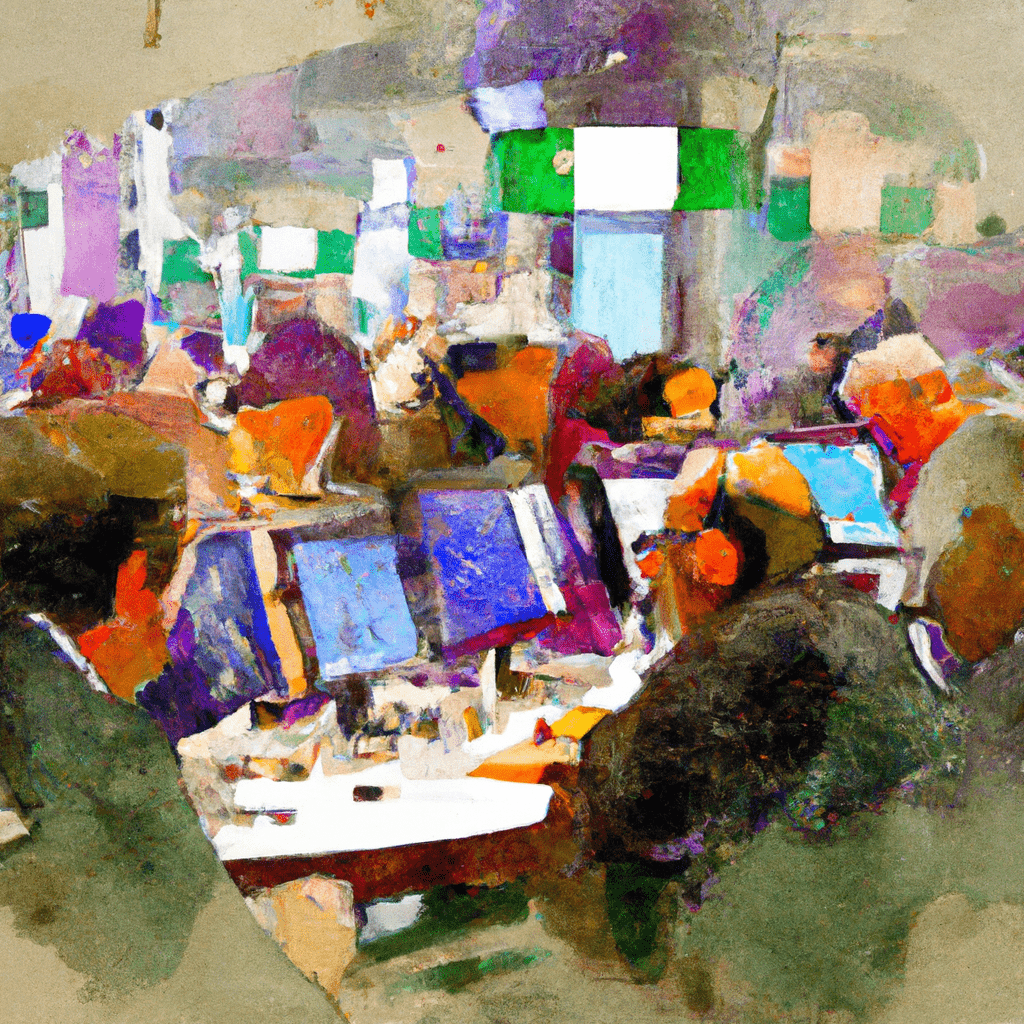Are you a beginner in the world of financial derivatives? Do terms like futures contracts, stock derivatives, and futures options trading sound like a foreign language to you? If so, you've come to the right place. In this article, we will provide you with a comprehensive guide to understanding financial derivatives, specifically focusing on futures and options trading. Whether you're looking to enhance your investment portfolio or simply expand your knowledge in the field, this article will walk you through the basics of financial derivatives and help you unlock the potential of futures options trading. So, let's dive into the world of financial derivatives and explore the exciting opportunities they offer.
1. “Understanding Financial Derivatives: A Beginner’s Guide to Futures and Options Trading”

Understanding Financial Derivatives: A Beginner's Guide to Futures and Options Trading
Financial derivatives play a crucial role in modern financial markets, providing investors with opportunities to manage risk, speculate on price movements, and enhance investment returns. Among the various types of financial derivatives, futures and options contracts are widely utilized by traders and investors.
A futures contract is a standardized agreement between two parties to buy or sell an underlying asset at a predetermined price and date in the future. These contracts are traded on organized exchanges, such as the Chicago Mercantile Exchange (CME) or the New York Stock Exchange (NYSE). Futures contracts are commonly used in commodities markets, including agricultural products, energy, and metals. However, they can also be used for financial instruments such as stock indices, interest rates, or currencies.
Options, on the other hand, are contracts that provide the buyer with the right, but not the obligation, to buy (call option) or sell (put option) an underlying asset at a predetermined price within a specified period. Options are traded on exchanges and can cover a wide range of assets, including stocks, commodities, and indices.
For beginners, understanding futures and options trading can be quite overwhelming. However, with the right guidance, it becomes easier to grasp the fundamental concepts. Here is a beginner's guide to futures and options trading:
1. Basics of Futures Trading:
– Learn about the concept of futures contracts and how they work.
– Understand the key elements of a futures contract, including the underlying asset, contract size, expiration date, and contract specifications.
– Familiarize yourself with the different types of futures traders, such as hedgers, speculators, and arbitrageurs.
2. Introduction to Options Trading:
– Gain knowledge about the fundamentals of options contracts and their characteristics.
– Learn about call and put options, strike price, expiration date, and option premiums.
– Understand the factors that influence option prices, such as the underlying asset's price, volatility, time to expiration, and interest rates.
3. Risk and Reward:
– Grasp the concept of risk management and how it applies to futures and options trading.
– Explore the potential rewards and pitfalls of trading derivatives.
– Understand how leverage works in futures and options trading and its impact on potential profits and losses.
4. Trading Strategies:
– Explore basic trading strategies, such as buying and selling futures contracts, options spreads, and hedging techniques.
– Discover how technical analysis and fundamental analysis can be used to make informed trading decisions.
– Learn about risk management techniques, including stop-loss orders and position sizing.
In conclusion, financial derivatives, particularly futures and options contracts, provide investors with a wide range of opportunities in managing risk and enhancing investment returns. By understanding the basics of futures and options trading, beginners can embark on their journey into the exciting world of financial derivatives. Whether it is stock derivatives, futures options trading, or other types of derivatives, a strong foundation in their mechanics and strategies is essential for success in this complex market.
2. “Exploring the Basics of Futures Contracts: A Comprehensive Overview of Stock Derivatives”

A futures contract is a type of financial derivative that allows investors to speculate on the future price movements of an underlying asset, such as stocks. It is a legally binding agreement between two parties to buy or sell the asset at a predetermined price on a specified future date.
One of the key features of a futures contract is that it is standardized, meaning that the contract size, delivery date, and terms are predetermined and regulated by an exchange. This standardization ensures transparency and liquidity in the market, as it allows for easy buying and selling of futures contracts.
Futures contracts can be used for various purposes, including hedging and speculation. Hedging involves using futures contracts to offset potential losses in the underlying asset. For example, if an investor holds a portfolio of stocks and is concerned about a potential decline in the market, they can sell futures contracts to protect against losses.
On the other hand, speculators use futures contracts to profit from anticipated price movements. They can take a long position by buying futures contracts if they believe the price of the underlying asset will increase, or they can take a short position by selling futures contracts if they expect the price to decline. By leveraging their positions, speculators can amplify their potential gains or losses.
Futures contracts are traded on exchanges, such as the Chicago Mercantile Exchange (CME) or the New York Mercantile Exchange (NYMEX). These exchanges provide a centralized marketplace where buyers and sellers can trade futures contracts. Trading can be done through open outcry, where traders physically gather on the trading floor, or electronically through computerized trading systems.
For beginners looking to venture into futures and options trading, it is essential to understand the basics of stock derivatives. Futures contracts are just one type of derivative, with options contracts being another popular choice. Options give the holder the right, but not the obligation, to buy or sell an asset at a predetermined price within a specified period.
In conclusion, futures contracts are a vital component of the financial derivatives market. They provide investors with opportunities to hedge against risk or speculate on future price movements. Understanding the basics of futures contracts is crucial for beginners exploring the world of stock derivatives and futures options trading.
3. “Maximizing Investment Opportunities: Unlocking the Potential of Futures Options Trading in Financial Derivatives”

Financial derivatives play a crucial role in maximizing investment opportunities, and one such avenue is through futures options trading. Futures options trading allows investors to unlock the potential of financial derivatives, specifically futures contracts, in order to enhance their investment strategies.
For beginners in the world of financial derivatives, understanding the basics of futures contracts is essential. A futures contract is a legally binding agreement between two parties to buy or sell an asset at a predetermined price on a future date. These contracts are standardized and traded on organized exchanges, providing investors with the opportunity to speculate on the price movements of various underlying assets, such as commodities, currencies, or stock indices.
Futures options trading takes this concept one step further by introducing options contracts on futures. An options contract grants the holder the right, but not the obligation, to buy or sell the underlying asset at a specified price within a specific timeframe. This additional layer of flexibility allows investors to benefit from the price movements of the underlying asset without actually owning it.
One of the key advantages of futures options trading is the potential for leverage. Leverage allows investors to control a larger position in the market with a smaller upfront investment. This can amplify potential profits, but it is important to note that it can also magnify losses. Therefore, it is crucial for beginners to fully understand the risks associated with leverage and implement proper risk management strategies.
Moreover, futures options trading provides investors with a wide range of investment opportunities. Whether an investor is bullish or bearish on the market, futures options trading allows them to take advantage of both upward and downward price movements. This flexibility enables investors to hedge existing positions, speculate on market trends, or generate income through options strategies such as covered calls or protective puts.
In conclusion, futures options trading in financial derivatives offers investors a powerful tool to maximize their investment opportunities. By understanding the basics of futures contracts and leveraging options contracts, beginners can unlock the potential of financial derivatives to enhance their investment strategies. However, it is important to approach futures options trading with caution, as it involves inherent risks. Therefore, it is recommended for beginners to educate themselves, seek professional guidance, and practice risk management techniques when venturing into this exciting area of the financial markets.
In conclusion, financial derivatives, such as futures contracts and options, offer a world of investment opportunities for both beginners and experienced traders. Understanding the basics of these instruments is crucial for anyone looking to navigate the complex world of stock derivatives. By unlocking the potential of futures options trading, investors can maximize their returns and manage risk effectively. Whether you are a novice or a seasoned trader, taking the time to educate yourself on financial derivatives can open doors to new investment strategies and potentially lucrative ventures. So, if you are ready to expand your financial portfolio, dive into the world of futures and options trading and discover the endless possibilities that financial derivatives have to offer.





